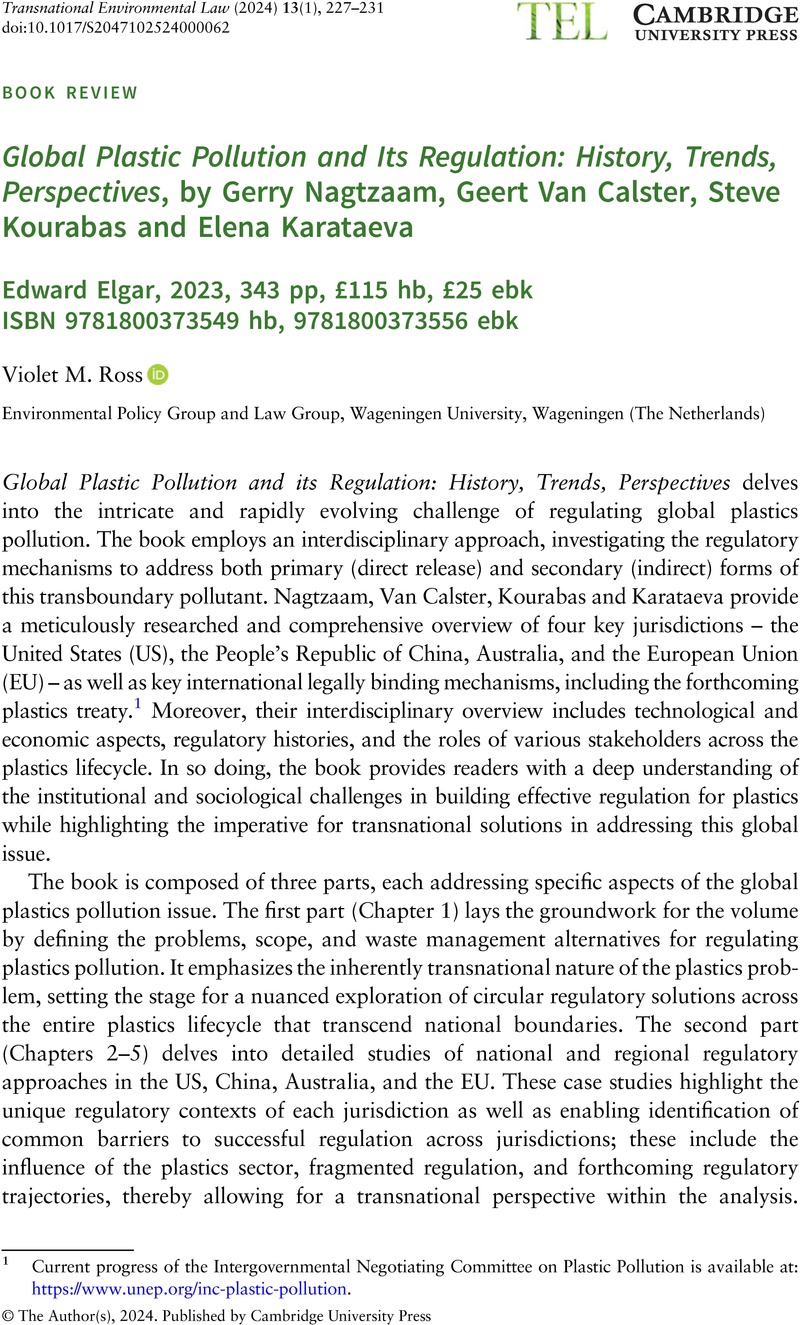No CrossRef data available.
Published online by Cambridge University Press: 15 April 2024

1 Current progress of the Intergovernmental Negotiating Committee on Plastic Pollution is available at: https://www.unep.org/inc-plastic-pollution.
2 Nielsen, T.D. et al., ‘Politics and the Plastic Crisis: A Review Throughout the Plastic Life Cycle’ (2020) 9(1) WIREs Energy and Environment, article e360CrossRefGoogle Scholar.
3 Single Use and Other Plastic Products (Waste Avoidance) Act [2020].
4 Basel (Switzerland), 22 Mar. 1989, in force 5 May 1992, available at: http://www.basel.int.
5 See Decision BC-14/12 of the Basel Convention's 14th Conference of the Parties, Basel (Switzerland), 29 Apr.–10 May 2019, in force 1 Jan. 2021, available at: https://www.basel.int/TheConvention/ConferenceoftheParties/Meetings/COP14/tabid/7520/Default.aspx.
6 Law of the People's Republic of China on the Prevention and Control of Environmental Pollution by Solid Wastes, 中华人民共喝过固体废物污染环境防治法 [adopted 1995, last revised in 2020]. See also Brooks, A.L., Wang, S. & Jambeck, J.R., ‘The Chinese Import Ban and Its Impact on Global Plastic Waste Trade’ (2018) 4(6) Science Advances, article eaat0131CrossRefGoogle ScholarPubMed.
7 Jambeck, J.R. et al., ‘Plastic Waste Inputs from Land into the Ocean’ (2015) 347(6223) Science, pp. 768–71CrossRefGoogle ScholarPubMed.
8 Alpizar, F. et al., ‘A Framework for Selecting and Designing Policies to Reduce Marine Plastic Pollution in Developing Countries’ (2020) 109 Environmental Science & Policy, pp. 25–35CrossRefGoogle Scholar.
9 Mah, A., ‘Future-Proofing Capitalism: The Paradox of the Circular Economy for Plastics’ (2021) 21(2) Global Environmental Politics, pp. 121–42CrossRefGoogle Scholar.